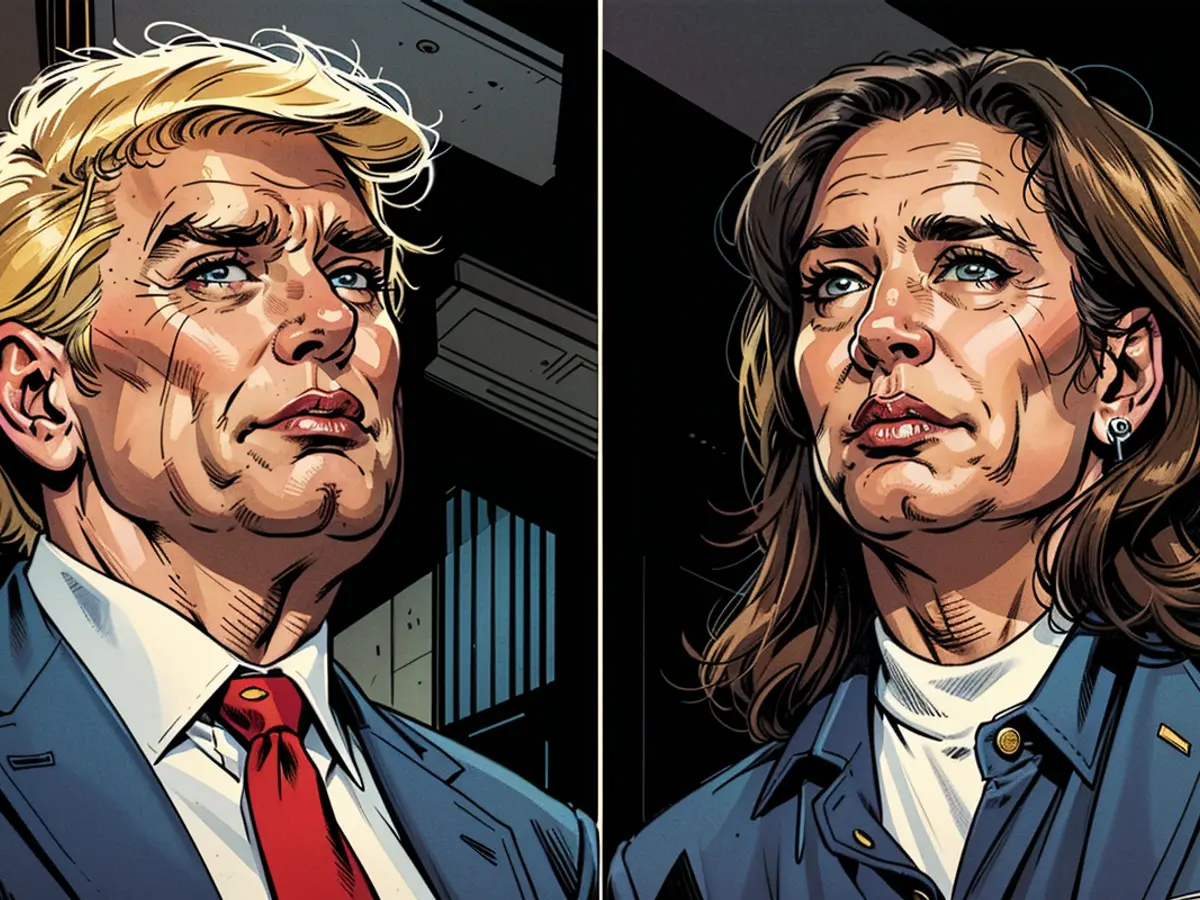Since Democratic candidate Harris joined the political arena, they have led in expenditures on advertisements, yet the Republican party is preparing for a significant final push.
In the final stretch of the campaign, things are shifting significantly, particularly in crucial battlegrounds. Based on AdImpact data, Republican spending and TV reservations from October 22 until Election Day suggest a potential edge for the GOP in a few key areas. This comes as Donald Trump's campaign and wealthy supporters stage a late surge.
Pennsylvania has been a significant focus for both parties, accounting for around 22% of all ad purchases during the condensed general election matchup. The combined advertising spending across the 15 weeks since President Joe Biden dropped out, including future reservations, surpassed $2 billion.
Both candidates and their allies have recognized Pennsylvania's importance, investing more in advertising there than in any other state. In fact, Pennsylvania saw about $100 million more in advertising than the second-ranked state, Michigan. Dems have outspent the GOP in Pennsylvania by approximately $37 million over the past three months.
Responding to this, both campaigns have targeted ads to win over Pennsylvania voters. Harris' campaign has produced ads promoting her appeal among Philadelphians, while Trump's campaign has highlighted the state's profitable fracking industry.
Pennsylvania, along with Michigan and Wisconsin, form the Democratic "blue wall" of Great Lakes states, representing Harris' best chance of collecting the 270 electoral votes needed to secure the presidency. In Michigan, Harris and her allies have amassed a significant lead over Republicans, outspending them by close to $58 million since she entered the race. The Democratic edge in Wisconsin is around $27 million.
Overall, Pennsylvania, Michigan, and Wisconsin accounted for about 42% of all Democratic presidential ad buys from July 22, the day after Biden dropped his reelection bid, until October 21, two weeks before Election Day.
The final push towards November 5
Despite being outspent by Democrats across all seven battleground states during the past three months, the GOP is expected to gain an advantage in Pennsylvania, Wisconsin, and North Carolina during the campaign's final two weeks.
However, several caveats apply. Future ad bookings can change. Early bookers tend to spend less compared to advertisers competing for limited TV slots in the final stages of the campaign. Additionally, ad spending totals include purchases by both candidates and outside groups. Candidates typically pay less for advertising than outside groups.
Democrats have had a substantial advantage in digital advertising, an area not heavily reserved well in advance. This provides Harris and her allies with another strategy to challenge the GOP's lead.
Despite the overall Dem advantage, there's been a notable shift in the balance, with Trump and his allies matching or exceeding the other side's ad spending in several states.
For instance, Republican advertisers in Pennsylvania are set to spend nearly $58 million over the final two weeks, $10 million more than Dem advertisers. This intense competition underscores both sides' determination to win the so-called pivotal state.
In Wisconsin, Trump and his allies have about $25 million worth of ad time reserved, approximately $4 million ahead of the Democrats. This could potentially overshadow Democratic efforts to maintain their "blue wall." MAGA Inc., a prominent pro-Trump super PAC, recently boosted its reservations in Wisconsin for the final two weeks by $11.5 million, reflecting the GOP's efforts to flip the state.
Similarly, in North Carolina, a primary target for Harris and her allies throughout October, Republicans are expected to outspend Dems by around $1.9 million during the final two weeks.
While Dems look set to maintain their ad spending advantage in the other four top battlegrounds, the GOP will outspend Dems by about $1.1 million in Michigan, $8.5 million in Georgia, and $3.1 million in Arizona, as well as $1.6 million in Nevada.
In the final two weeks, Dems – the Harris campaign and outside allies – had about $208 million in ad bookings, including $33 million in national ad reservations, compared to the GOP's $181 million, including $6.8 million in national bookings.
However, in terms of advertising during those final two weeks, Trump's campaign looks set to outspend Harris' campaign, around $67 million to $53 million. This advantage is significant given that candidates generally receive more favorable ad rates than outside groups.
When it comes to outside groups supporting their efforts, Dems are poised to outspend the GOP by about $155 million to $114 million. FF PAC, a major pro-Harris super PAC, is expected to play a significant role during the final sprint, contributing around $129 million worth of ad spending.
In the context of the campaign's final push, the GOP's strategic spending and reservations in key battlegrounds, such as Pennsylvania, could potentially shift the politics in their favor. The intense competition between both campaigns in advertising, particularly in states like Pennsylvania and Wisconsin, underscores the significance of politics in shaping the election outcome.








